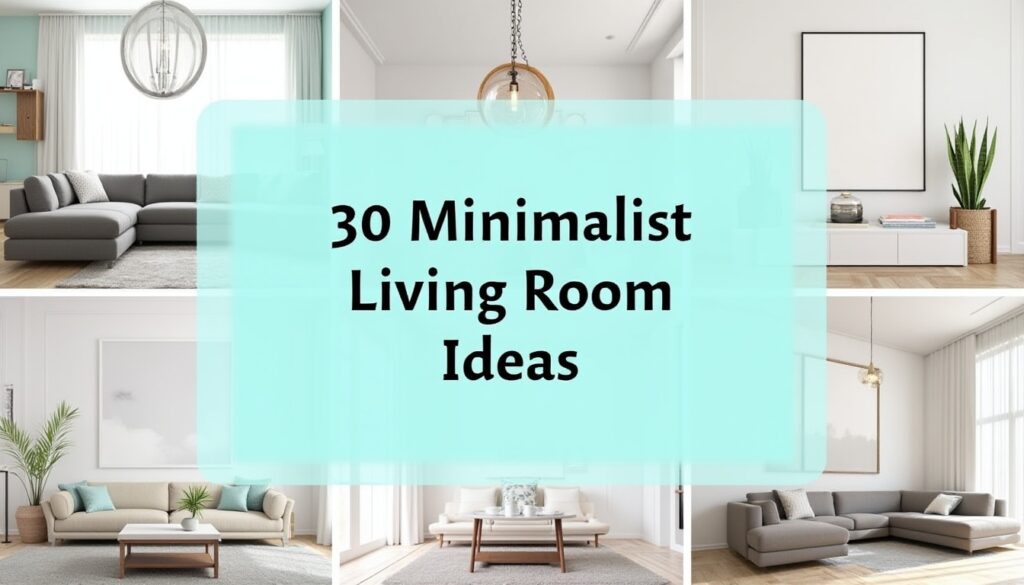Transform your living room into a peaceful sanctuary with these carefully curated minimalist design ideas. From neutral color palettes to functional furniture choices, these tips will help you create a space that’s both beautiful and clutter-free.
1. Embrace a Neutral Color Palette
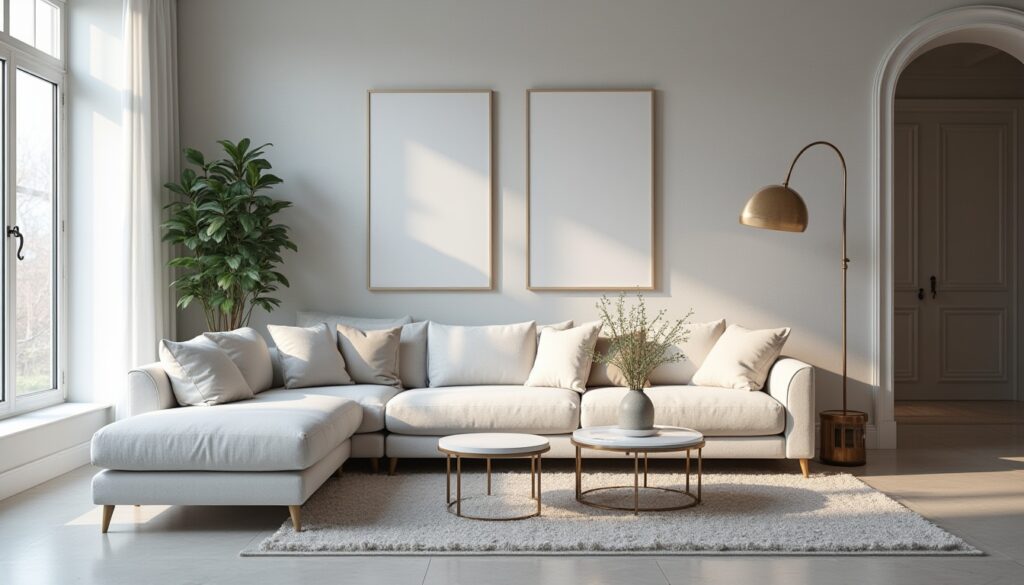
Start with whites, beiges, and soft grays as your foundation. These timeless colors create a calming atmosphere and make your space feel larger and more open.
2. Choose a Statement Sofa
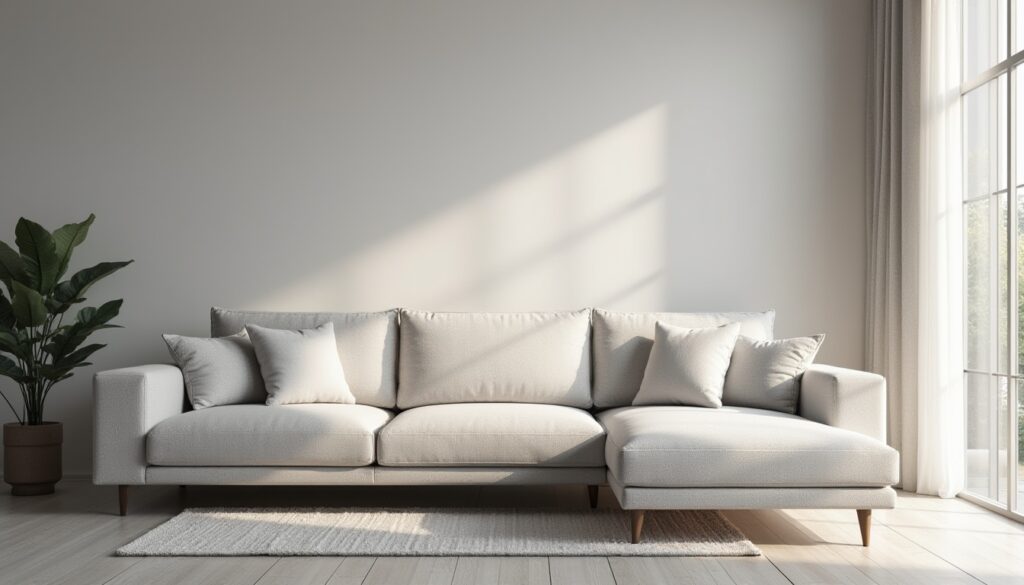
Invest in one high-quality sofa in a neutral tone. A clean-lined sectional or a sleek mid-century modern piece can anchor your space without overwhelming it.
3. Add Texture with Natural Materials

Incorporate wood, linen, and stone textures to add warmth and interest without visual clutter. Think oak coffee tables, linen throw pillows, and natural fiber rugs.
4. Use the “Less is More” Art Approach
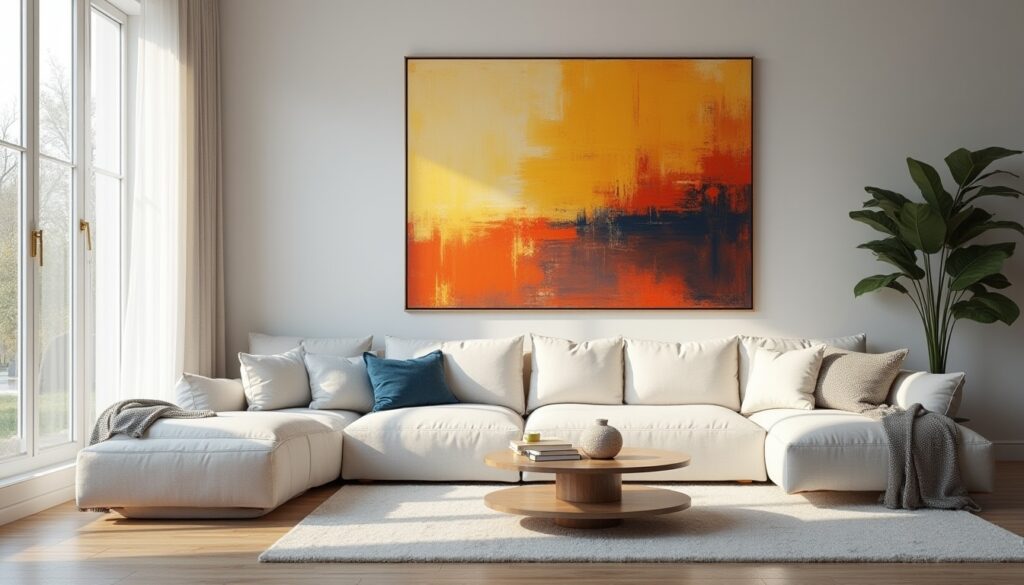
Select one or two large-scale art pieces instead of multiple small ones. A single oversized abstract painting can make a powerful statement.
5. Implement Hidden Storage Solutions
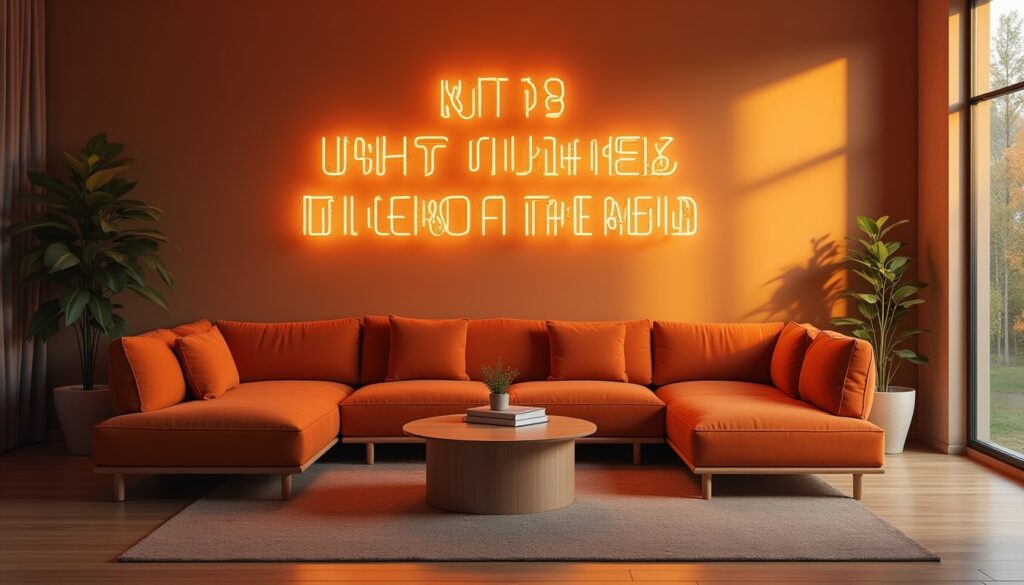
Choose furniture that doubles as storage, like ottomans with hidden compartments or a coffee table with drawers to keep surfaces clear.
6. Create Visual Space with Floating Shelves
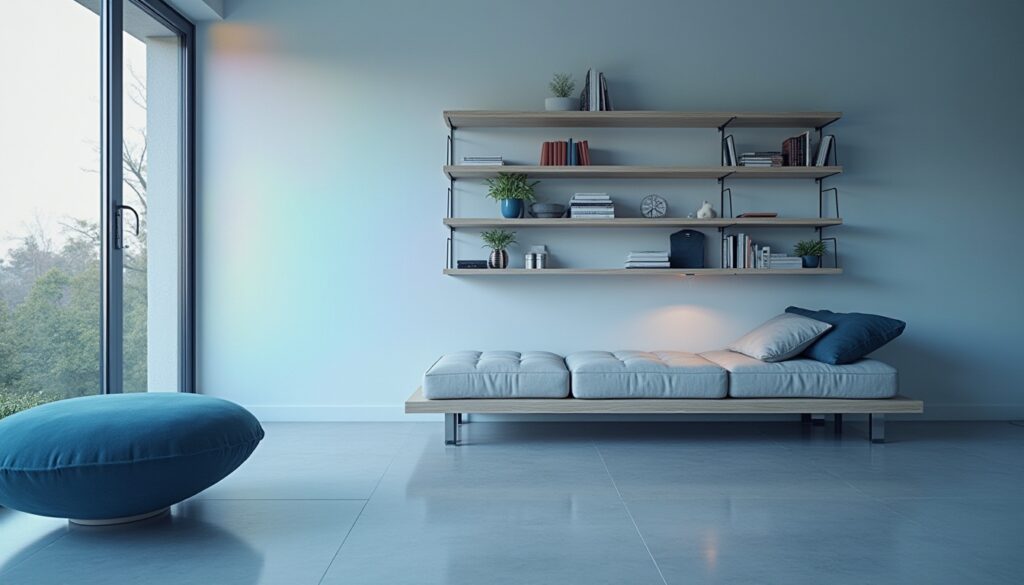
Wall-mounted shelves keep the floor clear while providing storage and display space for a few carefully chosen items.
7. Maximize Natural Light

Remove heavy curtains and opt for sheer panels or blinds that can be fully opened to flood your space with natural light.
8. Choose Multi-Functional Furniture
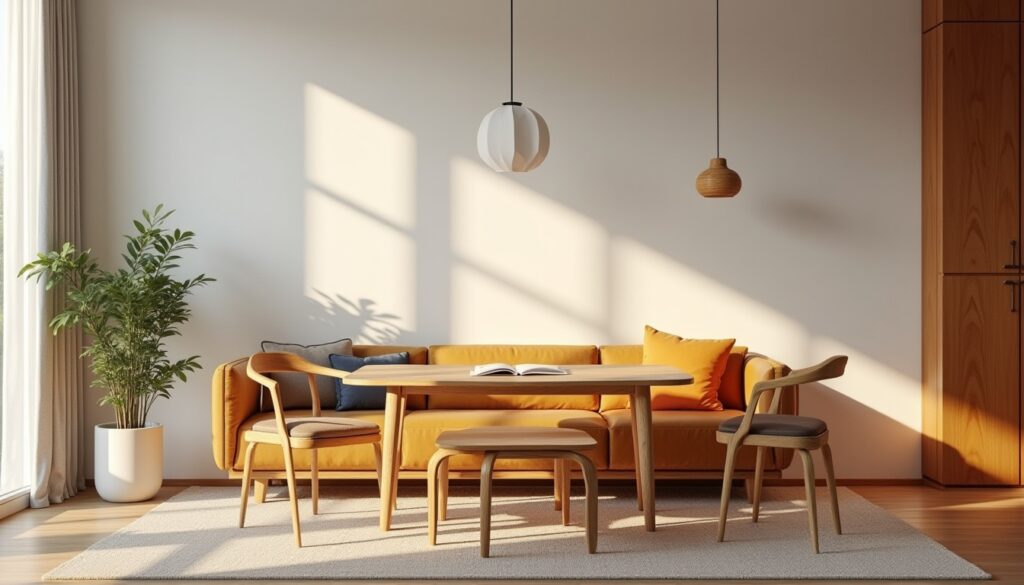
Select pieces that serve multiple purposes, like a dining table that can work as a desk or nesting tables that tuck away when not needed.
9. Keep Electronics Minimal and Hidden
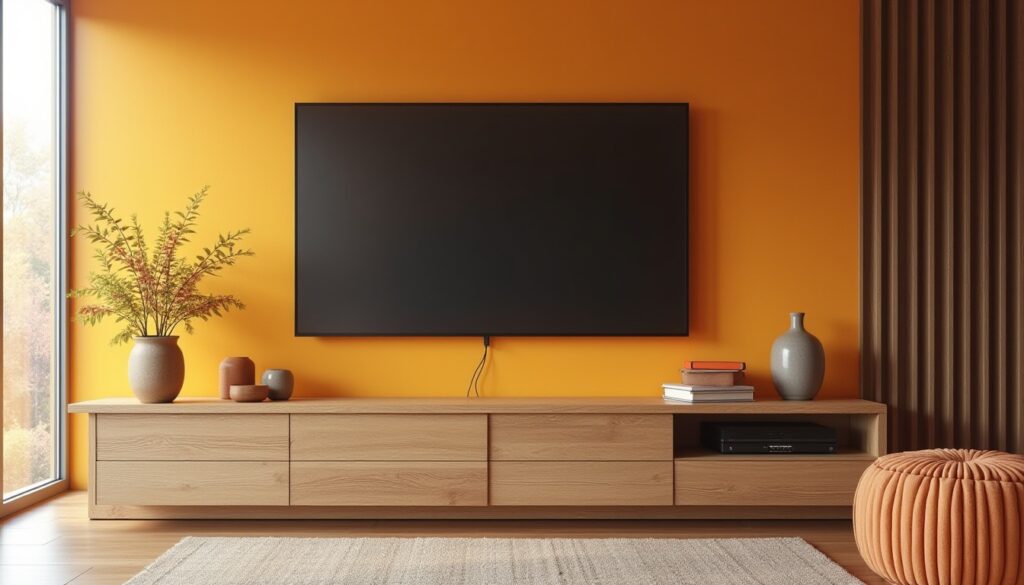
Mount your TV on the wall and hide cables with cord covers. Choose furniture with built-in media storage to keep devices out of sight.
10. Add Life with Strategic Greenery
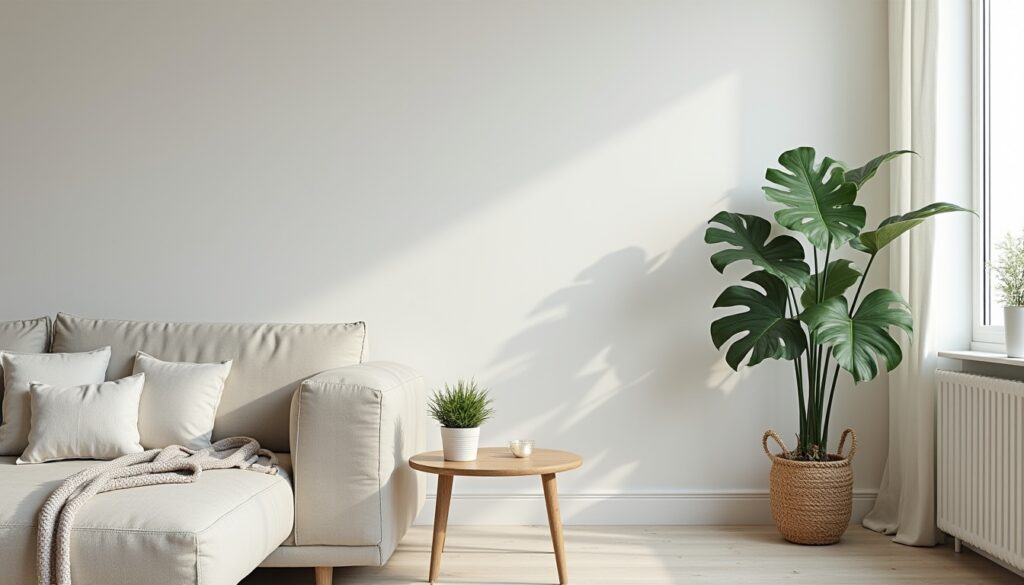
Include one or two large plants like a fiddle leaf fig or snake plant rather than multiple small plants to maintain clean lines.
11. Use Negative Space as Design Element
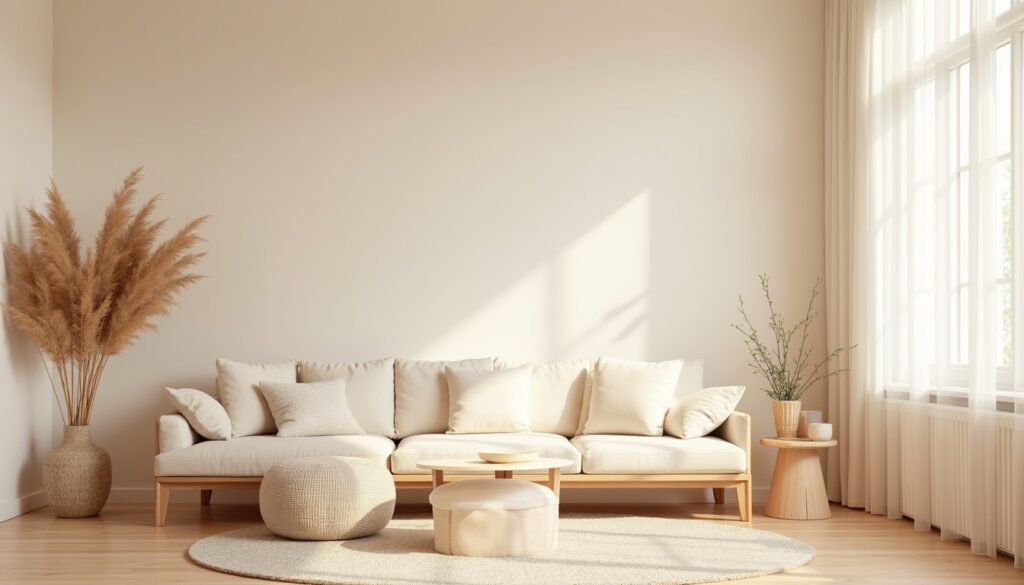
Don’t feel pressured to fill every corner. Empty space is just as important as furnished areas in minimalist design.
12. Select Low-Profile Furniture
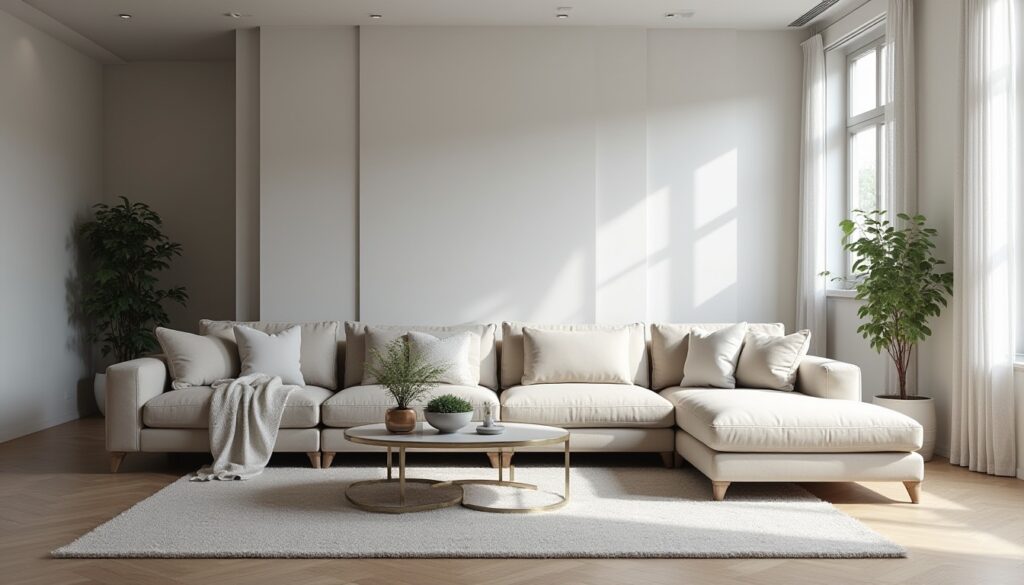
Choose furniture with clean, horizontal lines and low heights to create an open, airy feeling in your space.
13. Incorporate Monochromatic Schemes
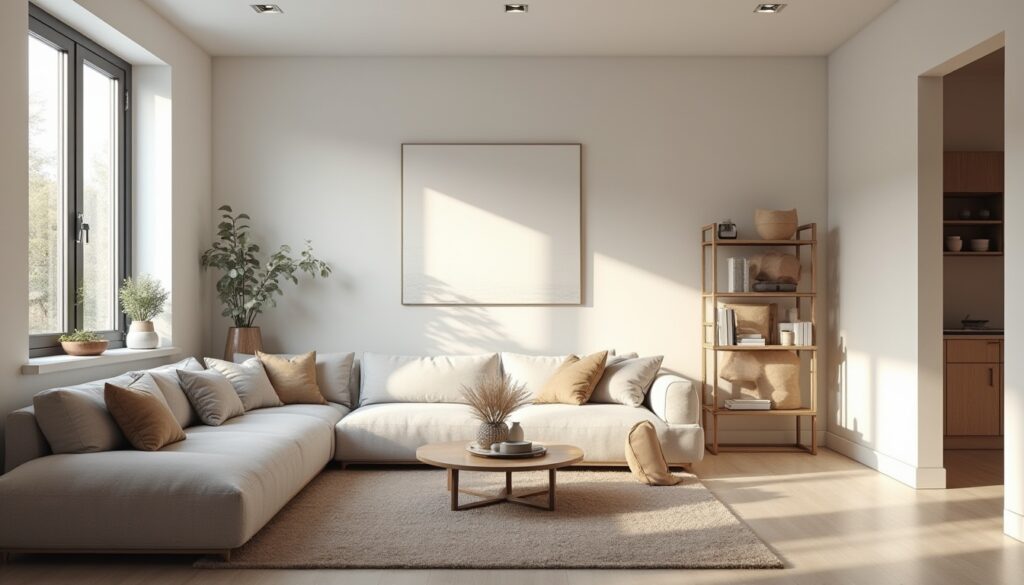
Stick to variations of one color family to create a cohesive, calming environment that feels intentionally curated.
14. Invest in Quality Over Quantity
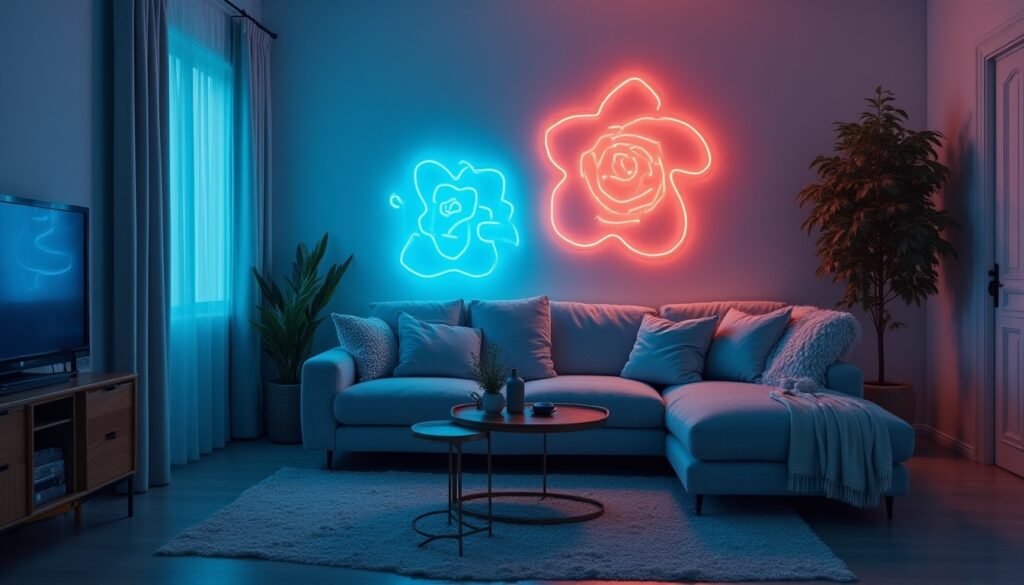
Buy fewer, higher-quality pieces that will last longer and look better than multiple cheaper alternatives.
15. Use Mirrors Strategically
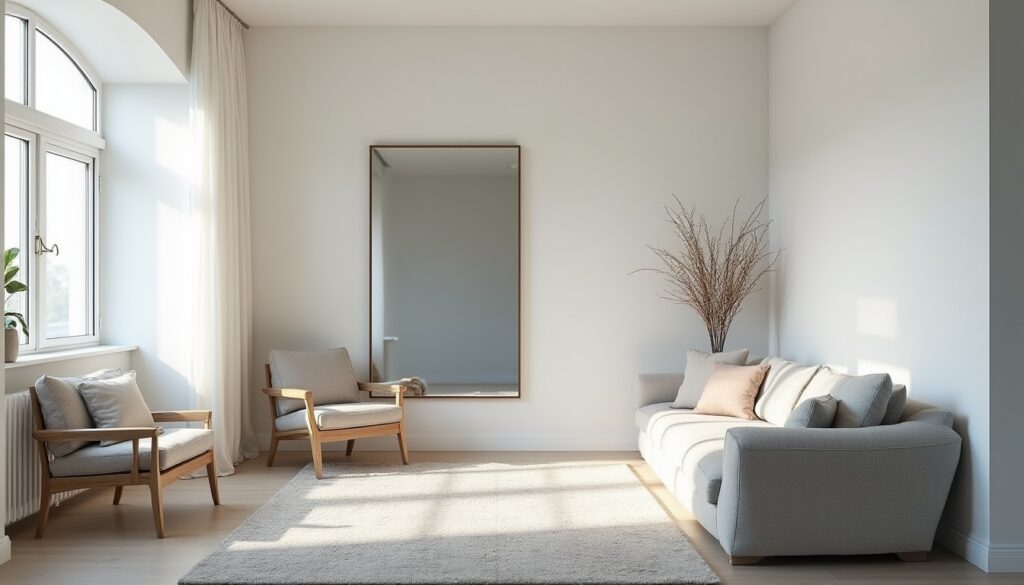
Place a large mirror opposite a window to reflect natural light and create the illusion of more space.
16. Choose Simple Window Treatments
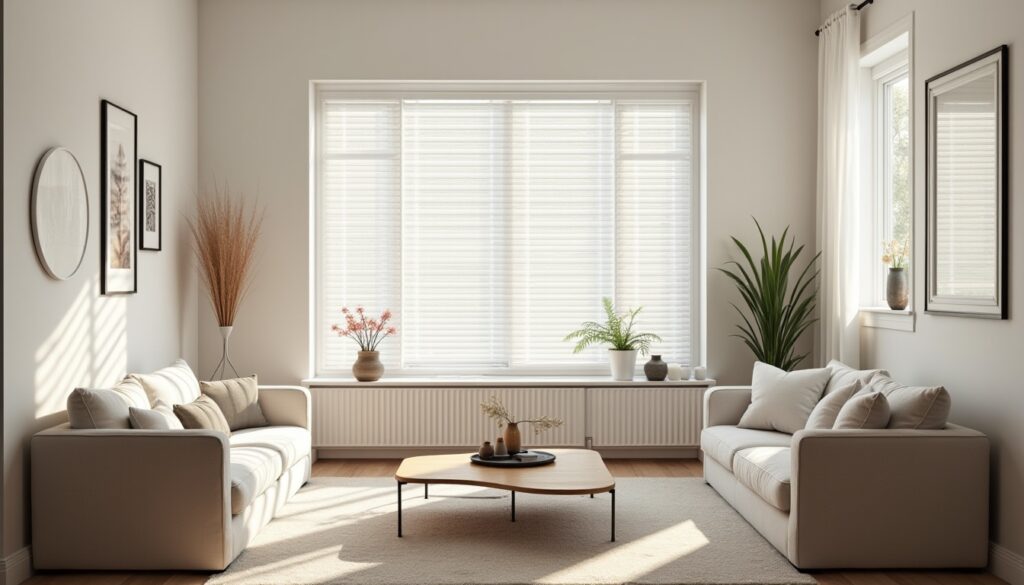
Opt for clean-lined blinds, simple panels, or even leave windows bare if privacy isn’t a concern.
17. Create a Focal Point
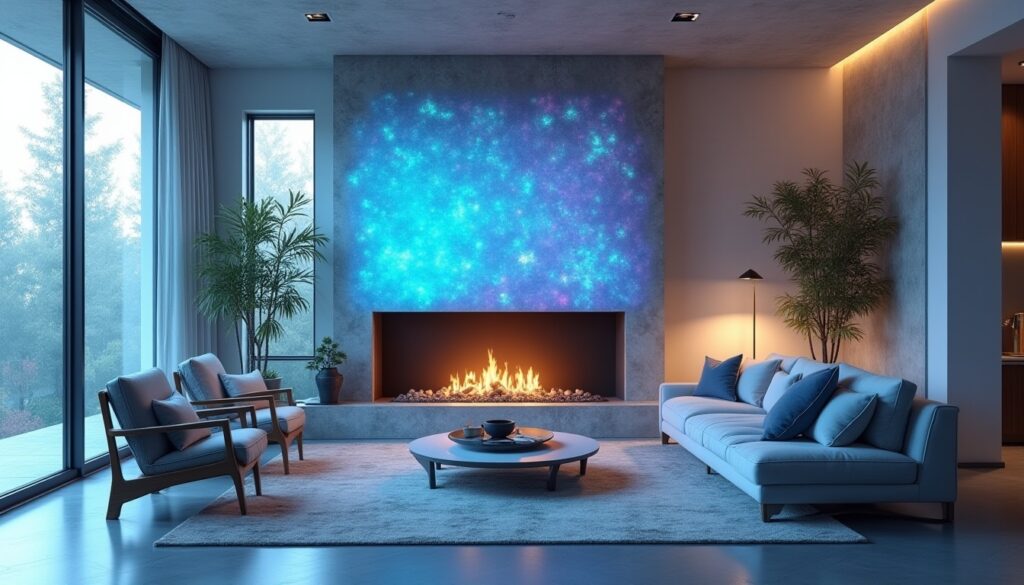
Designate one area as your room’s focal point, whether it’s a fireplace, a piece of art, or a stunning view.
18. Embrace Asymmetrical Balance
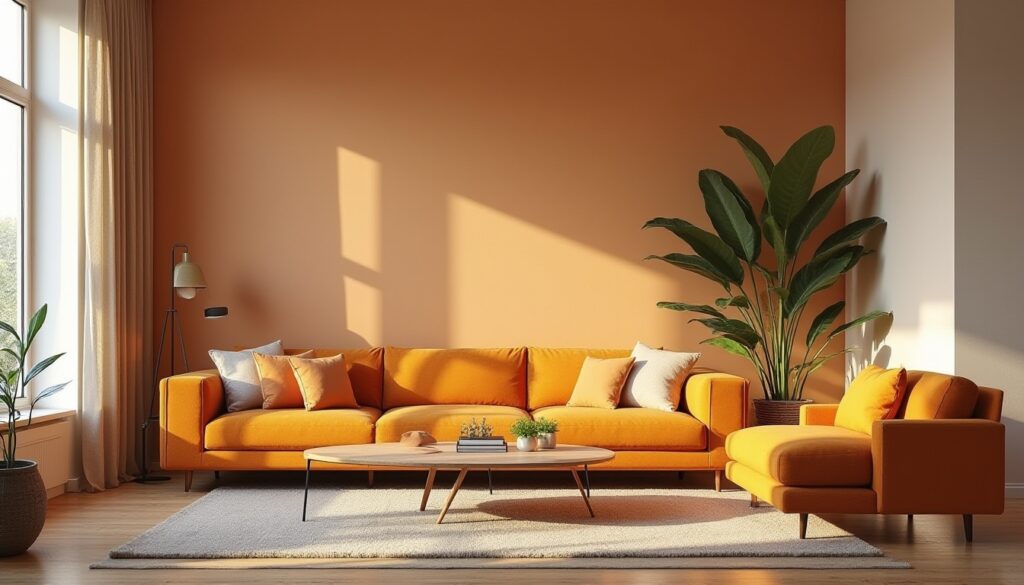
Create visual interest through asymmetrical furniture arrangements while maintaining overall balance and harmony.
19. Use Built-In Solutions
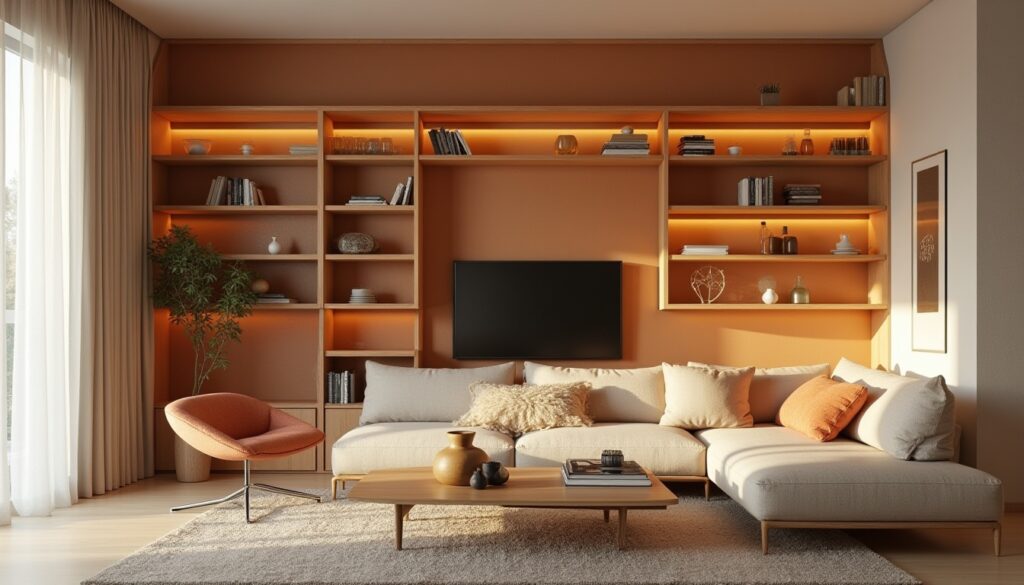
If possible, incorporate built-in shelving or seating to create custom storage without adding bulky furniture pieces.
20. Select Furniture with Exposed Legs
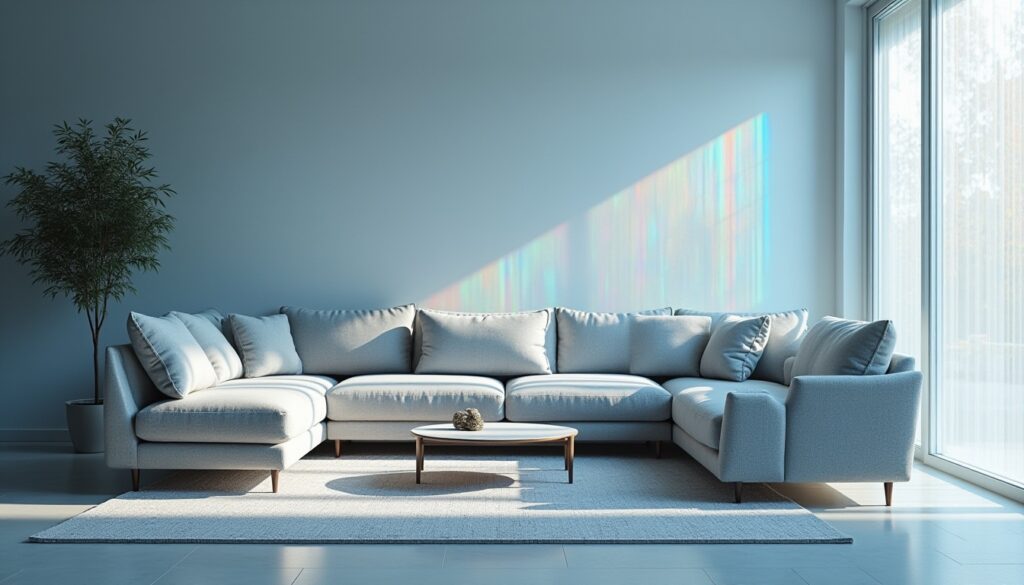
Choose sofas and chairs with visible legs to create visual lightness and make your space feel less heavy.
21. Limit Your Color Accents

If you want to add color, choose one accent color and use it sparingly through pillows, throws, or a single piece of art.
22. Create Zones with Area Rugs
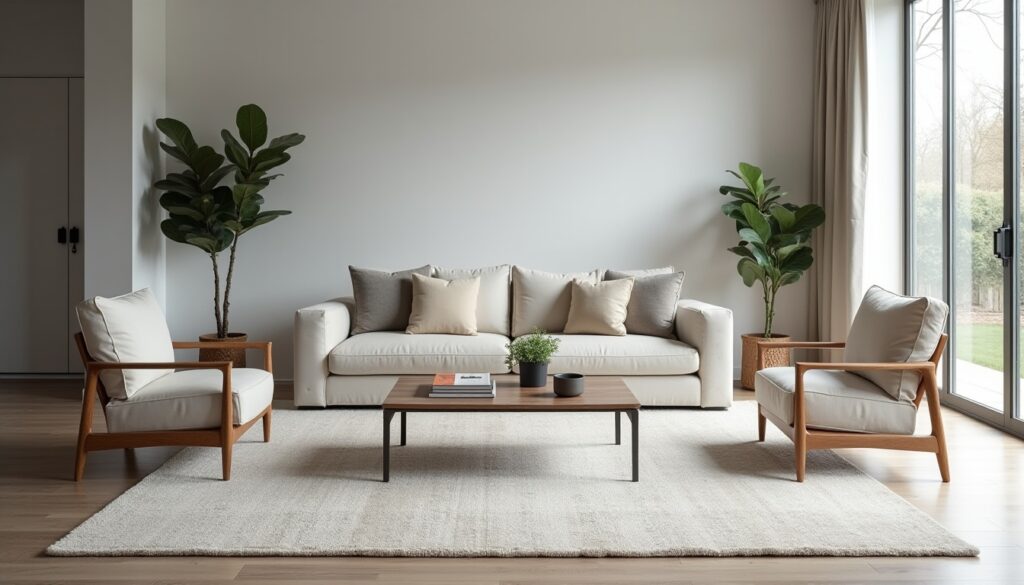
Use a large, simple area rug to define your seating area and add warmth without overwhelming the space with pattern.
23. Choose Handleless Storage
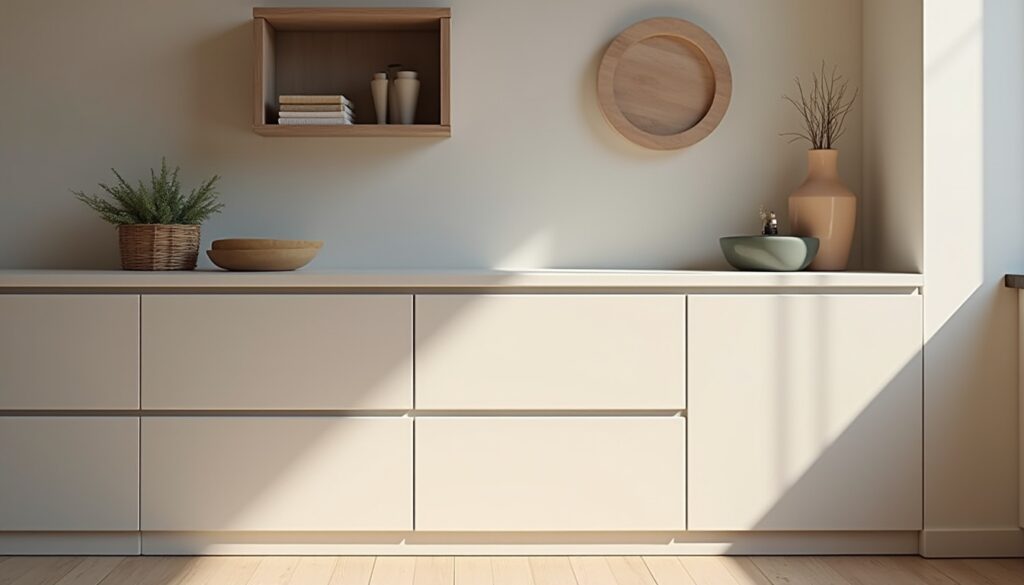
Select cabinets and storage pieces with push-to-open mechanisms or recessed handles for cleaner lines.
24. Implement the One-In-One-Out Rule

For every new item you bring into the space, remove something else to maintain your minimalist aesthetic.
25. Use Pendant Lighting
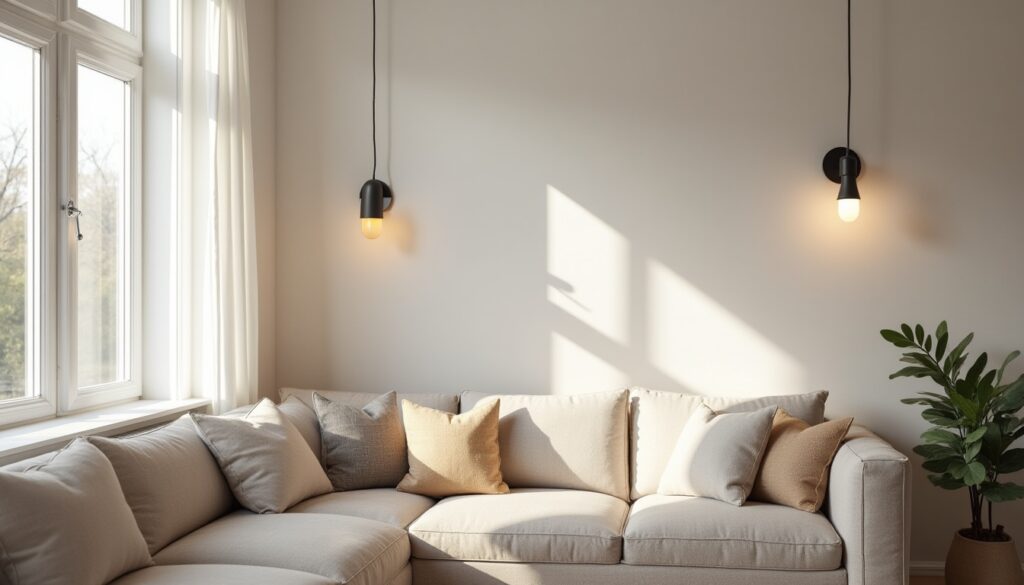
Replace table lamps with pendant lights or wall sconces to free up surface space and create cleaner sight lines.
26. Choose Furniture with Clean Geometric Lines
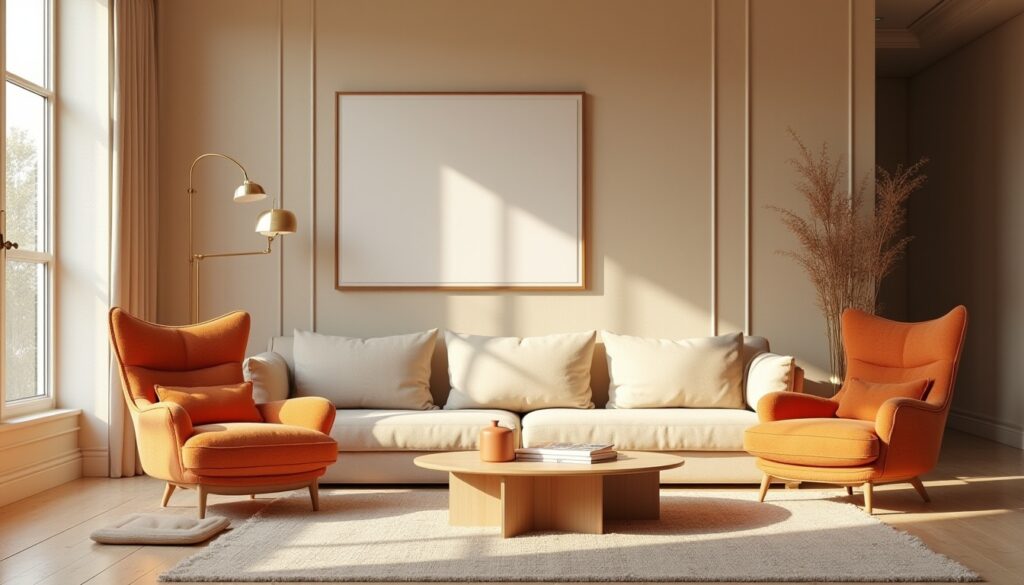
Select pieces with simple, geometric shapes rather than ornate or curved designs for a more minimalist look.
27. Create a Reading Nook
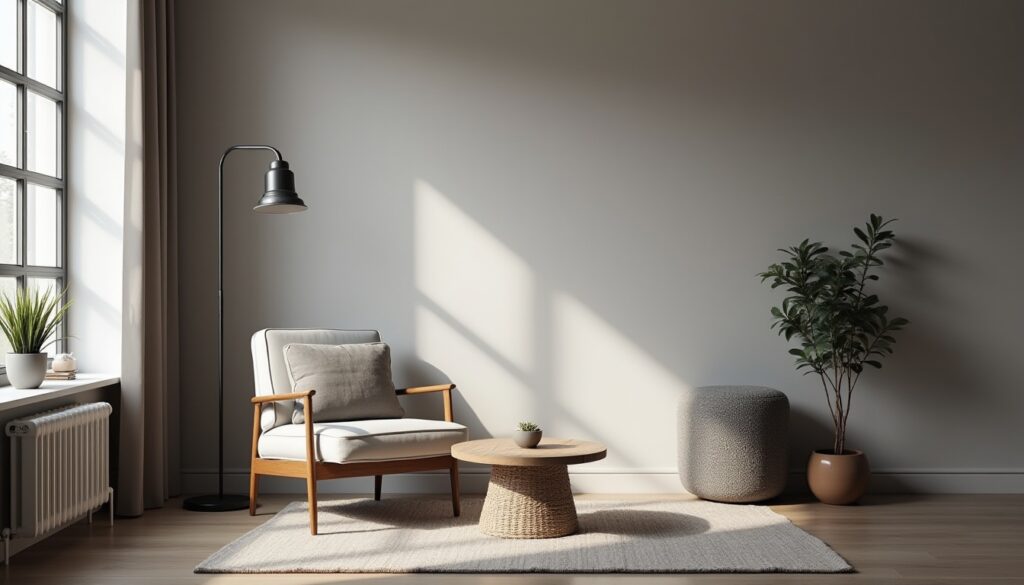
Designate a simple corner with a comfortable chair and good lighting for a functional yet minimal reading space.
28. Use Uniform Storage Containers
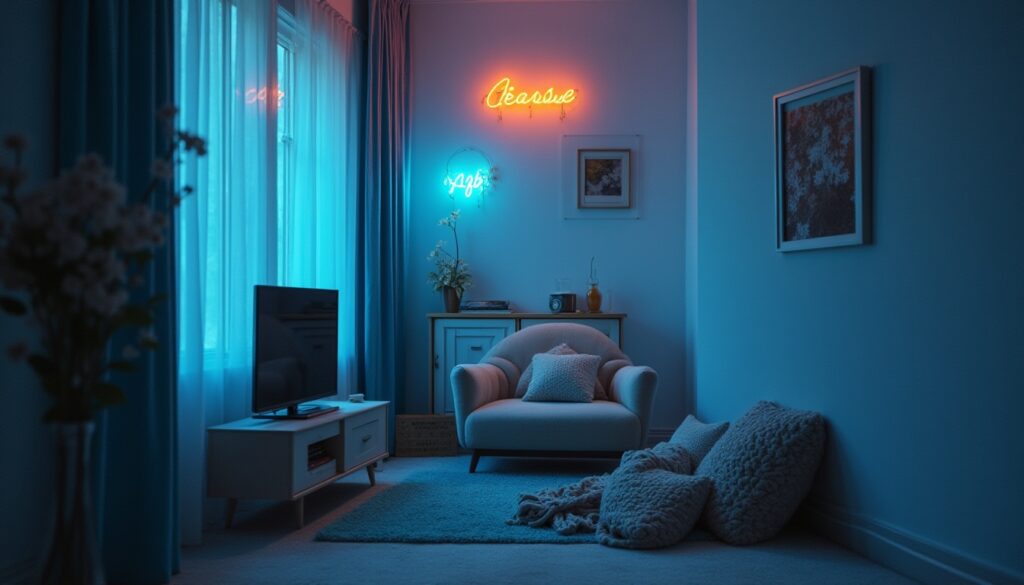
If you need visible storage, choose containers in the same material and color to maintain visual consistency.
29. Embrace Floor-to-Ceiling Elements
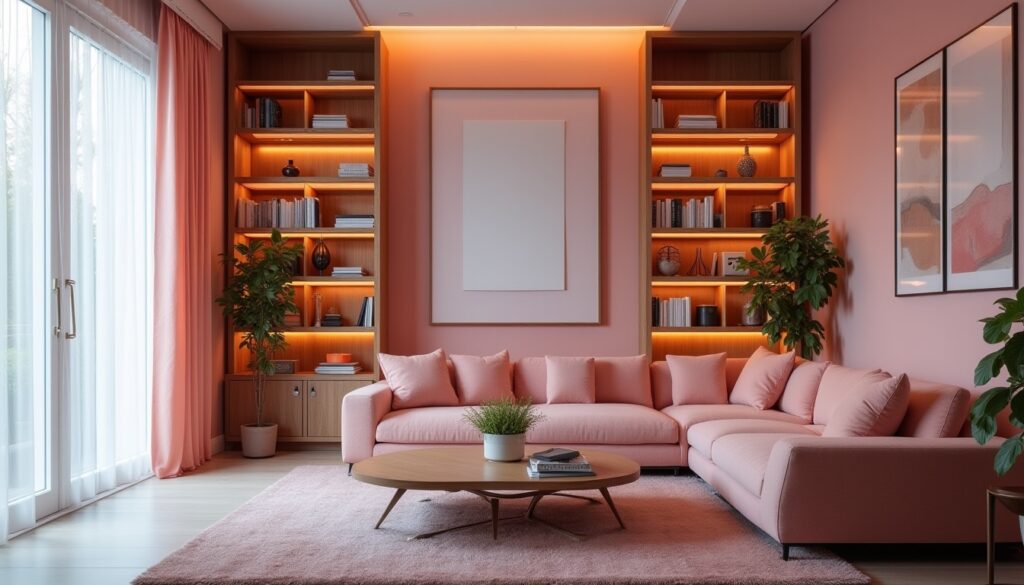
Use tall bookcases or curtains that extend to the ceiling to draw the eye upward and make your space feel larger.
30. Practice Regular Decluttering
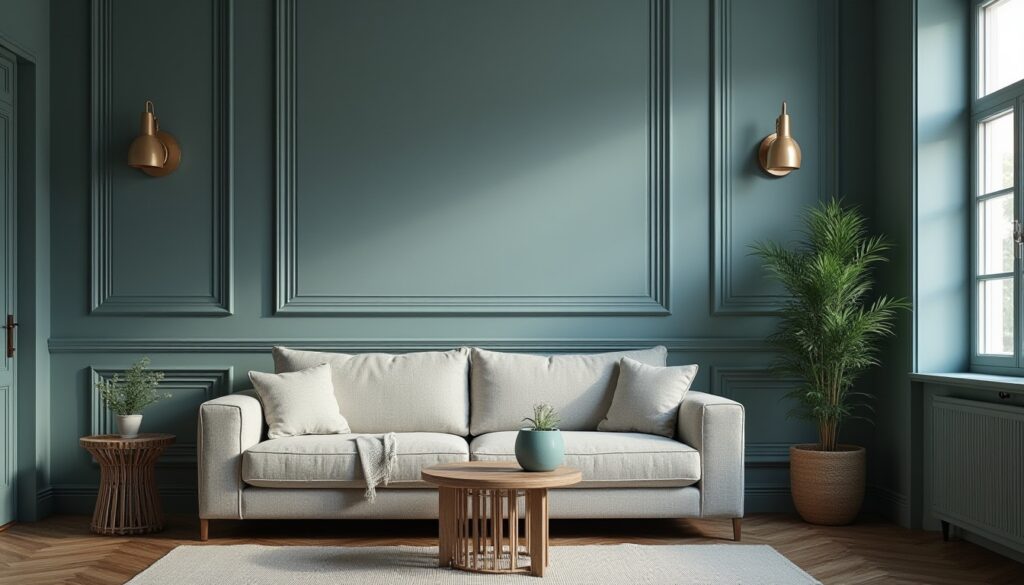
Schedule monthly decluttering sessions to ensure your minimalist living room stays true to its peaceful, uncluttered aesthetic.
Pro Tip: Remember that minimalism isn’t about having nothing—it’s about having only what you need and love. Each item in your living room should serve a purpose or bring you joy.
Save this pin and start implementing these ideas one at a time to create your perfect minimalist living room sanctuary!
